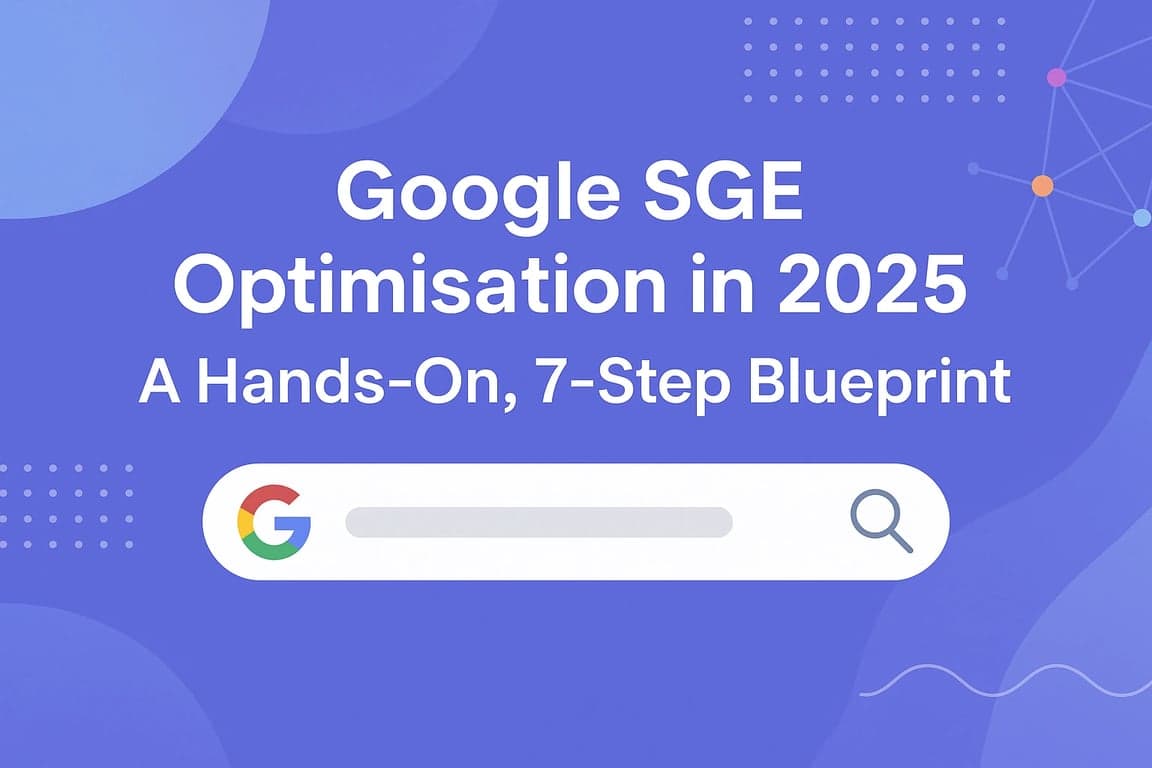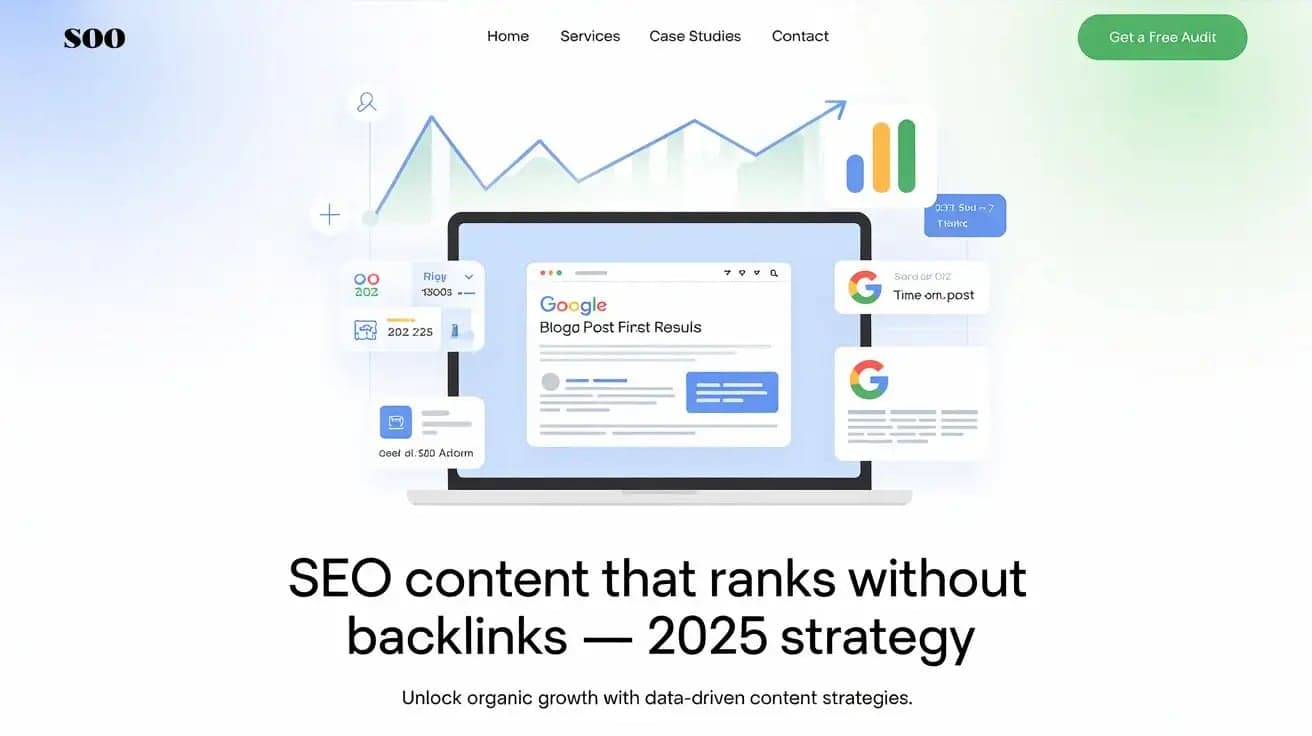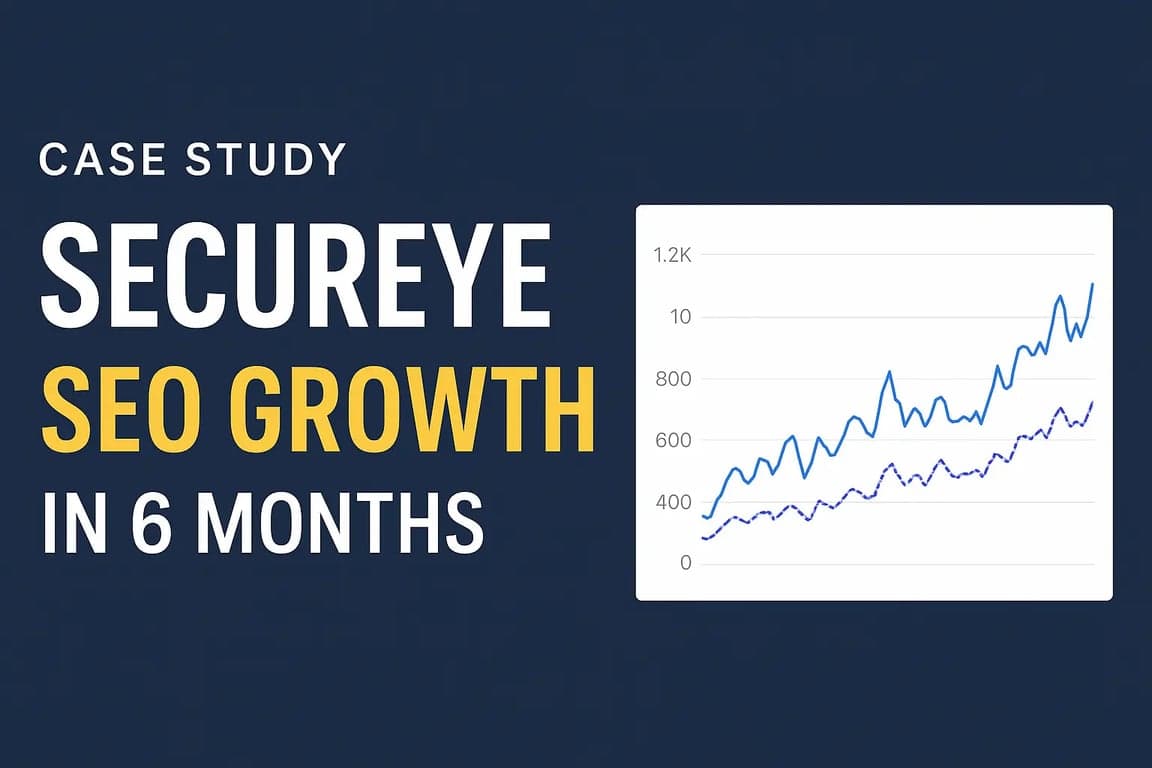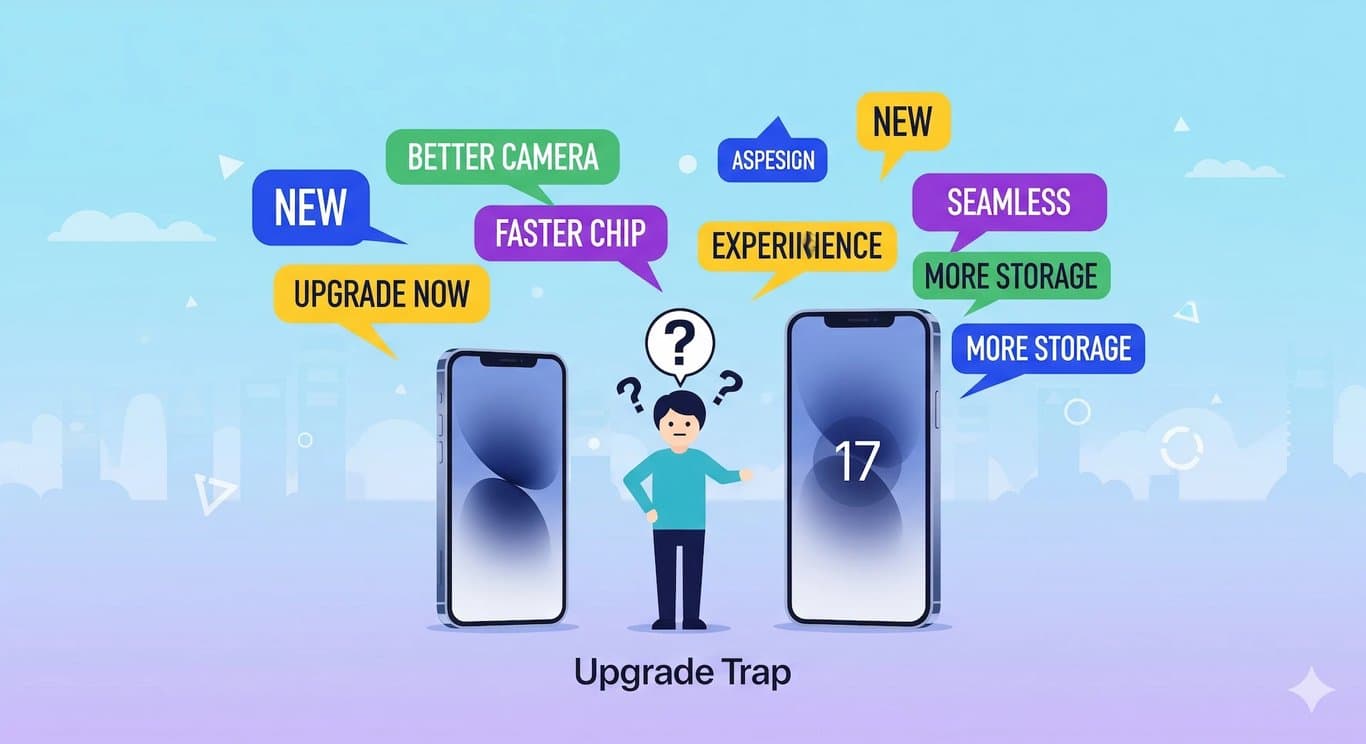 Introduction
Introduction
The way people search for answers is changing fast. Five years ago, ranking on Google was the game. Today, commanding attention from AI assistants like ChatGPT, Perplexity, Gemini, and Google’s SGE is becoming increasingly more important than securing a top SERP position. That shift is the crux of Generative Engine Optimisation (GEO)—optimising your content so it appears in AI-generated answers, summaries, and citations.
If you've spent years building backlinks and conquering SERPs, GEO may feel unfamiliar. But if you ignore this shift, your carefully crafted content risks becoming invisible, not because it's incorrect or poorly written, but because it's formatted and structured for the wrong interface.
In this guide, I deeply explore:
How major AI systems gather and cite information.
How to structure content so it's citable by machines.
How to build experience and trust signals for AI.
and real-world workflows to audit and optimise your existing blog ecosystem.
This isn’t theory; it's what I’ve tested over the last 18 months across client campaigns and personal sites—real users seeing results in AI assistants and growing zero-click referral traffic.
1: How AI Assistants Source and Cite Information
 Understanding GEO begins with understanding how AI bots operate behind the scenes. Unlike Google bots that crawl and index pages, most large language models (LLMs) either lean on massive pretraining datasets or combine that with real-time web retrieval. That retrieval process, known as Retrieval-Augmented Generation (RAG), allows tools like Perplexity and Bing Copilot to browse the web for supporting citations to include in their generated answers.
Understanding GEO begins with understanding how AI bots operate behind the scenes. Unlike Google bots that crawl and index pages, most large language models (LLMs) either lean on massive pretraining datasets or combine that with real-time web retrieval. That retrieval process, known as Retrieval-Augmented Generation (RAG), allows tools like Perplexity and Bing Copilot to browse the web for supporting citations to include in their generated answers.
LLM Training vs. Retrieval
ChatGPT relies mostly on its extensive training data (up to 2023/24). It cites generically, generously pulling recognisable factual domains.
Gemini/Claude may mix trained knowledge with limited real-time query abilities, subject to training data freshness.
Perplexity explicitly performs real-time searches and displays citations, so your content can show up by domain name if optimised correctly.
Bing Copilot and Google SGE also roll in AI-modelled language and structured answer summaries with links to trusted sources.
Academic Rigour, Not Clickbait
These models favour content that reads like reference work—clean facts, step-by-step instructions, defined concepts, and original frameworks. They are less likely to cite clickbait listicles, speculative trend pieces, or anonymous content. That’s why GEO requires establishing credibility, clarity, and trust.
Real-World Case:
In a recent case audit for a client, updating a post on “keyword difficulty without backlinks” by rewriting key sections into defined content blocks and adding schema markup resulted in visible citations in Perplexity within 48 hours. The old version—with backlink focus—never appeared in assistant answers.
2: The Seven Pillars of GEO-Optimised Content
This section dives into the seven critical elements every GEO-ready article must include.
1. Topic Focus and Micro-Specificity
AI assistants deliver precise answers, so content must solve narrow questions with clarity. A broad "Ultimate Guide to Content Marketing" is less likely to appear than "How to Write SEO Blog Content That Ranks Without Backlinks in 2025". Narrower topics both meet real searcher intent and serve GEO better.
2. Structured Formatting for Readability
Every GEO-optimised blog must include:
H1, H2, H3 hierarchy
Bullet lists or numbered steps
TL;DR executive summary
Inline callout boxes or definitions
This formatting helps language models parse and present individual segments as stand-alone answers.
3. EEAT Signals in Action
AI tools increasingly surface content that conveys human expertise:
Author bylines with real credentials and project examples
“Last updated” timestamps to signal freshness
Inline citation links to authoritative domains
Sections with personal opinion or case evidence
Your content must earn trust before being surfaced to AI readers.
4. Citing Reputable Sources
Every time you mention a fact, statistic, or authoritative framework, link to the original research or official documentation, not your own internal copying. External links help language models verify and trust your assertions.
5. Offering Original Insight
Rewriting or repackaging isn’t enough. Strong GEO content includes:
Personal frameworks or models,
Real client or case study snippets,
Observations that go beyond recited lists.
AI tends to cite unique phrasing or structured logic as credible.
6. Applying Schema Markup
Structured data is not just for Google. Defining your content with:
Article schema,
FAQ schema with clear questions and answers,
Author schema with credentials,
HowTo schema where relevant
...makes your content machine-readily discoverable and digestible for AI systems.
7. Highlightable Content Blocks
This simple formatting technique increases your chances of being cited:
Definition callouts,
Step-by-step numbered lists,
Quoted frameworks,
Key takeaways are boxed or italicised.
These segments are extractable by AI models and often elevated in their formatted response boxes.
3: GEO Optimisation Strategies for Major AI Platforms
If you want your content to be cited by ChatGPT, Gemini, Perplexity, or Google’s SGE, you must adapt your writing and structural approach for each platform. Below is a breakdown of critical tactics per AI assistant.
Google SGE
Google’s Search Generative Experience often surfaces AI-powered summaries at the top of SERPs. Your content must be:
Structured for extraction with concise answers and subheadings.
Well-sourced: Every fact or list must be linked to credible external sources.
Topical cluster-friendly: A related post on Google SGE optimisation can reinforce your Domain Trust.
SGE guide Read here: Google SGE Optimisation in 2025: A Hands‑On, 7‑Step Blueprint
Perplexity AI
Perplexity features answers with footnoted citations. To rank:
Use short, extractable answers (e.g. “What is GEO?”).
Support each answer with a reference link.
Format FAQs or definitions clearly.
Verify your content is crawlable and accessible (not hidden behind a login or JS-blocked pages).
Within days of updating an article to include clearer FAQ schema and inline references, I began appearing in Perplexity answers, confirming the effectiveness of structured data.
ChatGPT & Bing Copilot
These assistants don’t offer real-time browsing to standard users. They rely on their trained models, which may reference content from:
Copyrighted text included in training data.
High-authority content likely scraped by OpenAI or Microsoft before the cut-off dates.
To optimise for this:
Prioritise clear phrasing and definitions.
Include unique frameworks or author insights.
Use an AP-style or formal professional tone and clarity.
Publish on domains that already exhibit authority (your own blog cluster helps).
Gemini and Claude
These assistants blend retrieval and generated text. What matters here is:
Combining strong content with schema markup and link authority.
Favouring articles that adhere to plain English, factual referencing, and structured layout.
Having FAQ, HowTo, and Author schema applied.
By aligning with these requirements, your content becomes machine-trustworthy and more likely to be surfaced.
4: Step‑By‑Step GEO Implementation Guide
Here’s how to audit existing content and create new posts that are optimised for inclusion by AI assistants.
Step 1: Content Audit
Identify existing blog posts ranking or performing well in search.
Determine if they already carry EEAT signals: author bio, updated date, source links.
Review formatting: Are headings clear? Are there FAQs or definitions? Can the content be easily attributed?
Step 2: Apply GEO Principles
For each selected page:
Refresh opening and closing paragraphs to include an author identity statement.
Insert a TL;DR section at the top summarising the key answer points.
Add one or two FAQ-style blocks framed as questions and answers.
Format a “citable” block, such as:
Definition: Generative Engine Optimisation is the practice of ...Add or update structured schema markup (via Ghost HTML card or plugin).
Step 3: Create New GEO-Optimised Posts
Use this structure:
Title (focused, narrow topic)
TL;DR summary
Segment content per subtopic (use H2, H3)
Include a “Key Takeaways” or “Fact Box” that is extractable
Internal link to your pillar posts and other cluster content
Include external link(s) to reputable sources
Add the FAQ schema and embed an author bio
Mark the publish date and “Last Updated” date (include manually)
Step 4: Promote & Encourage AI Discovery
Share on Reddit threads, SEO communities, and LinkedIn posts with clear framing.
Use social channels to push the content (Tweets, LinkedIn threads, etc.).
Ensure pages are crawlable—no password or paywall restrictions.
If possible, syndicate short summaries or questions on platforms that feed into assistants like Medium, WordPress.com, or forums (so LLMs can parse and reference your ideas).
Step 5: Track GEO Signals Over Time
Test queries in Perplexity and Gemini to search for your post’s key phrases.
Use Google Analytics to reveal traffic spikes from domains like perplexity.ai or bing.com.
Set up Google Alerts or Brand24 to track mentions or content usage.
5: How to Measure GEO Performance and Impact
Tracking GEO success doesn’t currently show up in Google Search Console. Instead, you’ll rely on indirect signals:
Perplexity Citations: If your domain begins appearing frequently in citations for your topic queries, your content is visible to assistants.
AI-Assisted Queries: Ask tools like ChatGPT or Gemini direct questions related to your content to see if the phrasing is included.
AI Referral Traffic: In Google Analytics, monitor traffic from AI domains (e.g. bing.com/copilot, perplexity.ai) and organic referrals to measure performance.
Set benchmarks:
Aim for at least 3–5 Perplexity citations per article within a month of updating.
Track percentage growth in referral traffic from assistant domains.
Test the content before and after applying the GEO updates to verify the improvement.
Downloadable GEO Checklist and Template
To help you get started immediately, here’s a downloadable checklist and content-creation template based on this GEO framework. It includes:
Table of content items per GEO pillar
Formatting prompts for ‘citable blocks’ and FAQ sections
Schema markup snippets you can copy/paste into Ghost Wisp
Author bio template to strengthen EEAT
Internal linking logic for topical clusters
Download it here for free:
Download the Ultimate GEO-Optimisation Checklist and Blog Template (PDF)
For SEO professionals focused on optimising for Google’s AI specifically, be sure to check out my other guide:
Google SGE Optimisation in 2025: A Hands‑On, 7‑Step Blueprint
(Link: https://blog.surajdev.com/post/google-sge-optimisation-in-2025-a-handson-7step-blueprint)
That post dives deeper into the nuances of ranking content within Google's AI Overviews.
The future of content optimisation in 2025 is not about backlinks or keyword density. It’s about structured, trustworthy, reader-first content that earns its place in AI-generated answers. By applying GEO principles, you're not chasing clicks—you’re building authority with machines that distribute knowledge.
The brands and creators who adapt early will be the ones AI assistants recommend first. If you're building in the open—documenting your framework, sharing your experience—you make your content machine-worthy.
This isn't just SEO anymore. It's a new frontier of visibility and authority. I built this template, structure, and strategy over hundreds of campaigns across startups, B2B brands, and personal blogs. If it helps you, drop me a message, share your wins, or let me know if you want help implementing it.
You don’t need backlinks (Read: How to Create SEO Content That Ranks Without Backlinks). You just need GEO-ready content.
Frequently Asked Questions (FAQs)
1. What is Generative Engine Optimisation (GEO)?
Generative Engine Optimisation is the process of structuring and formatting your content so it can be cited, surfaced, or referenced by AI assistants like ChatGPT, Perplexity, Gemini, Bing Copilot, and Google SGE. It goes beyond traditional SEO by focusing on machine-readability, citation readiness, and structured authority.
2. How is GEO different from traditional SEO?
Traditional SEO targets human readers via SERPs, emphasising keywords, backlinks, and click-throughs. GEO, on the other hand, optimises content for AI summarisers and assistants by focusing on:
Structured formatting (H2s, lists, FAQs)
Credible sources
Schema markup
Unique, citable insights
3. Which AI platforms currently surface content from the web?
As of 2025:
Perplexity and Bing Copilot actively cite real-time web content.
Google SGE generates summaries with embedded links.
Gemini and Claude mix trained knowledge with selective retrieval.
ChatGPT (Free & Plus) relies mostly on trained data unless browsing is enabled.
4. Can my content show up in ChatGPT responses if it’s not cited?
Yes. Even if not directly linked, your phrasing, frameworks, or ideas might be referenced by AI models if they were included in the training data or have been paraphrased from well-optimised, high-authority sources.
5. How do I know if my content is appearing in AI assistants?
You can:
Search key phrases in Perplexity and look for your domain in citations.
Track AI-referral traffic in Google Analytics (e.g., from perplexity.ai, bing.com/copilot)
Use tools like Brand24 or Google Alerts to monitor mentions.
6. Do I need to add schema markup manually?
Not always. If you're using platforms like WordPress, Ghost, or Webflow, plugins or built-in features may handle schema. For custom sites, use structured data types like:
Article
FAQ
Author
HowTo (when applicable)
7. What type of content performs best in GEO?
Content that:
Answer specific, narrow questions
Offers step-by-step or factual breakdowns
Includes author credibility and timestamps
Links to reputable external sources
Uses formatting like TL;DRs, definitions, and key takeaways
8. Does GEO eliminate the need for backlinks?
Not entirely, but it reduces dependence on them. With AI assistants bypassing search engines, content that’s well-structured and trusted can perform well without traditional backlink strategies.
📚 Sources & References
OpenAI – How ChatGPT Works
https://openai.com/chatgptPerplexity AI – How It Retrieves and Cites Information
https://www.perplexity.ai/aboutGoogle Search Central – Structured Data and Schema Markup
https://developers.google.com/search/docs/appearance/structured-data/introGoogle SGE Overview
https://blog.google/products/search/generative-ai-search/Bing Copilot and Microsoft AI Integration
https://blogs.bing.com/search/2023-05/copilot-search-ai-integrationSchema.org – FAQ, HowTo, and Article Markup Standards
https://schema.org/Experience, Expertise, Authoritativeness, and Trustworthiness (EEAT) Guidelines – Google
https://developers.google.com/search/blog/2022/12/helpful-content-systemYoast – How to Add Structured Data to WordPress
https://yoast.com/structured-data-schema/Brand24 – AI Mention Monitoring Tool
https://brand24.com/Suraj Dev – Google SGE Optimisation in 2025: A Hands-On, 7-Step Blueprint
https://blog.surajdev.com/post/google-sge-optimisation-in-2025-a-handson-7step-blueprint




